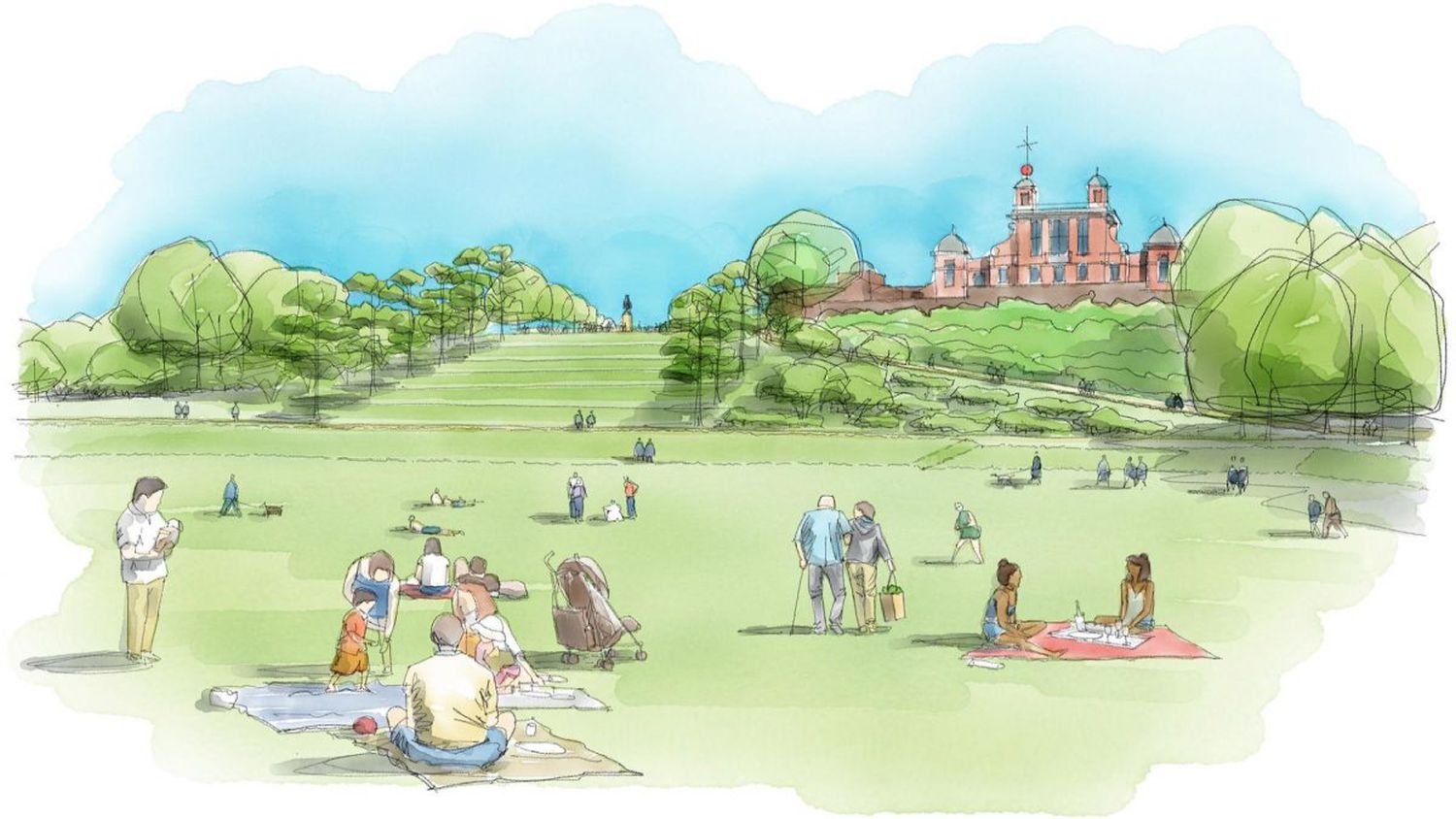
The Royal Parks will restore a set of 17th century giant grass steps in Greenwich Park in London.
Announcing a three-year project to revive Greenwich Park, The Royal Parks warned that the unique features of the landscape risked being lost forever.
The park was the hunting ground of Henry VIII in the 16th century. But in the late 17th century, Charles II transformed it into a formal baroque landscape. Landscape architect André Le Nôtre, who designed the gardens at the Palace of Versailles, was responsible for Greenwich Park’s new layout.
The landscape comprises the ‘Grand Ascent’ – giant grass steps – and a formal banked layout (parterres) lined with tree avenues. It provides a symmetrical formal layout linking the Thames to Blackheath Gate.
The original sharp features have slumped, accelerated by footfall from five million annual visitors. Meanwhile, the original avenues of elm trees died from Dutch elm disease. In the 1970s, Turkey oak trees were planted in their place. But those trees are now squirrel damaged and in decline, as well as suffering frequent pest infestations.
The Royal Parks said it would restore the tree avenues by removing the Turkey oak trees and a small number of beech trees. It will plant a net increase of new elm and lime trees that are native, more resilient, and semi-mature. The organisation will not remove any trees planted before the 1970s.
It will also install several irrigation points connecting to ground water to overcome the challenges of fast-draining soil. And it will enhance 7,000 sq m of woodland areas across the wider park to boost carbon absorption and biodiversity.
Work will begin in winter 2022 ahead of completion in March 2025.











